Home>diy>Architecture & Design>How To Choose The Right Paint For The Interior Of My House
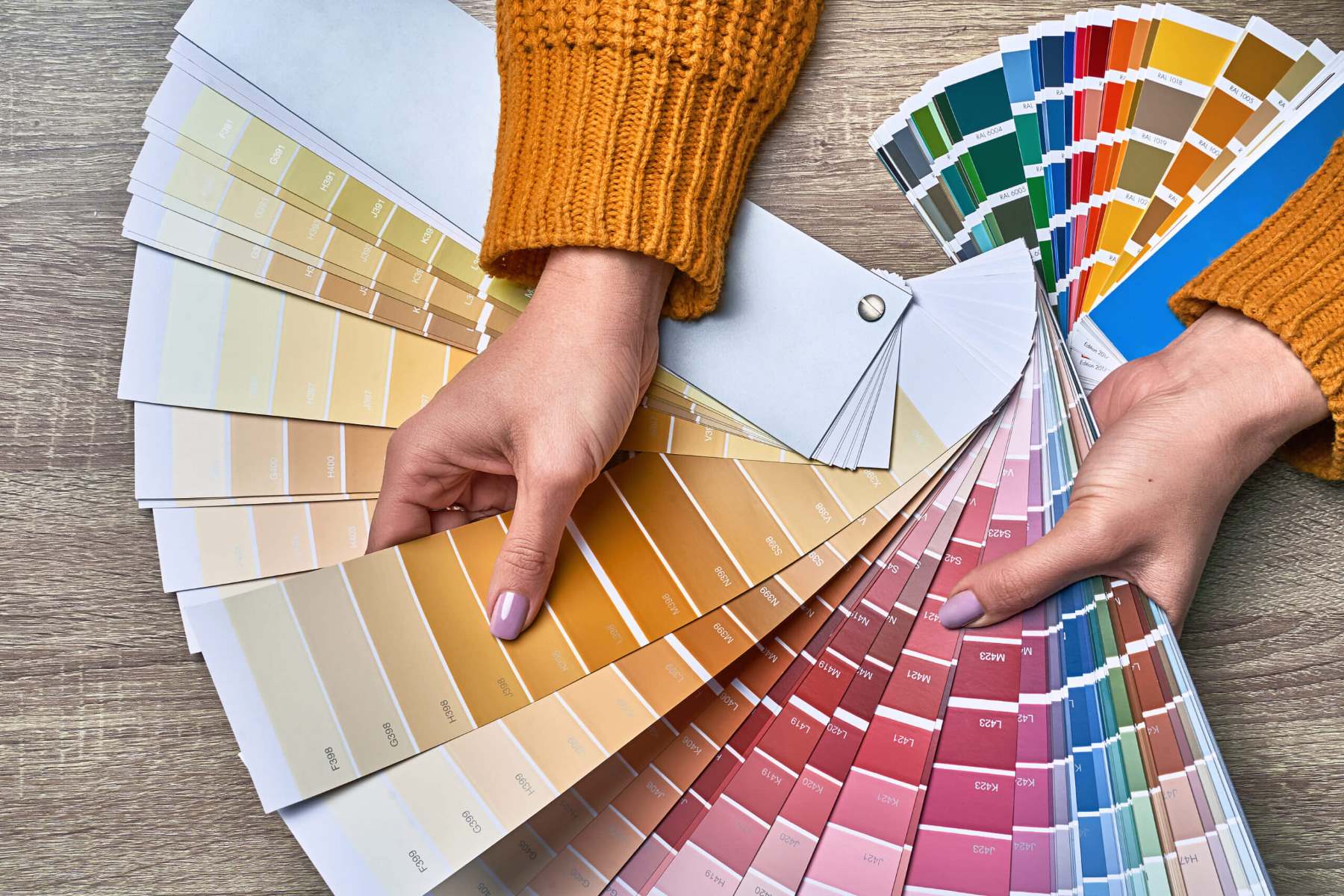

Architecture & Design
How To Choose The Right Paint For The Interior Of My House
Modified: January 19, 2024
Looking for expert advice on choosing the right paint for the interior of your house? Our architecture design tips will help you achieve a stunning and durable finish.
(Many of the links in this article redirect to a specific reviewed product. Your purchase of these products through affiliate links helps to generate commission for Storables.com, at no extra cost. Learn more)
Introduction
Welcome to the world of interior design and home improvement! Whether you are moving into a new space or looking to give your current home a fresh makeover, one of the most important decisions you will make is choosing the right paint for your interior walls. The color and finish of the paint can greatly impact the look and feel of a room, setting the tone for the overall ambiance and aesthetics of your living space.
Choosing the right paint may seem like a daunting task, with an overwhelming array of options available on the market. But fear not! In this article, we will guide you through the process of selecting the perfect paint for your interior walls. From considering the importance of paint selection to understanding paint finishes and evaluating color schemes, we will cover all the essential factors to help you make an informed decision.
In your quest for the perfect paint, it is important to strike a balance between personal preference and practicality. You want a color that resonates with your style and complements your furnishings, while also considering factors such as lighting, room size, and the desired mood or atmosphere. Additionally, understanding the different types of paint and finishes available will ensure that you choose a product that suits your needs in terms of durability, ease of application, and maintenance.
Furthermore, we will discuss the importance of testing paint samples and color swatches before committing to a particular hue. Colors can appear differently in various lighting conditions and may interact with the existing elements in your space. Testing samples will help you visualize how the paint will look on your walls and make an informed decision.
Additionally, we will touch on the financial aspect of your paint selection. Setting a budget for paint and supplies is essential to ensure that you make a cost-effective choice without compromising on quality.
Lastly, for those who may not have the time, skill, or desire to tackle the painting process themselves, we will explore the option of hiring professional painters. This can save you time, effort, and potential frustration, while also providing expert advice and ensuring a flawless finish.
So, let’s embark on this colorful journey of choosing the right paint for the interior of your house. Get ready to transform your living space into a place that truly reflects your personality and creates a welcoming and inspiring atmosphere for you and your loved ones!
Key Takeaways:
- Choosing the right paint for your interior walls is crucial for creating a harmonious and visually pleasing environment. Consider factors such as lighting, room size, and color associations to reflect your unique style and personality.
- Testing paint samples and color swatches is essential to visualize how colors will appear in your space and interact with lighting and existing decor. This meticulous process minimizes the risk of regret and ensures the perfect paint choice for your home.
Importance of Choosing the Right Paint
Choosing the right paint for your interior space is essential for several reasons. It goes beyond simply selecting a color that appeals to your personal taste. The right paint can significantly impact the overall look and feel of your home, creating a harmonious and visually pleasing environment. Let’s explore the importance of making the right paint choice:
- Aesthetic Appeal: The color of your walls sets the foundation for the entire room’s aesthetic. It can create a sense of warmth, tranquility, or energy depending on the chosen tones. Well-chosen paint colors can enhance the existing décor, highlight architectural features, or even make a small room appear more spacious.
- Mood and Atmosphere: Colors have the power to evoke emotions and impact our moods. For example, cool hues like blues and greens can create a calming and serene atmosphere, while warm and vibrant colors like reds and oranges can evoke energy and excitement. By carefully selecting the right paint color, you can set the desired mood and atmosphere in each room of your home.
- Lighting and Room Size: The paint color you choose can greatly affect how light is reflected in the room. Light colors can make a space feel brighter and more open, while dark colors can create a cozy and intimate atmosphere. Additionally, the size of the room can be visually altered with the right choice of paint colors. Light colors can make a small room appear larger, while dark colors can add depth and richness to spacious areas.
- Resale Value: If you are considering selling your home in the future, choosing the right paint colors can have a significant impact on its marketability. Neutral and timeless colors are generally more appealing to potential buyers, as they provide a blank canvas for them to envision their own style and preferences.
- Durability and Longevity: Not all paints are created equal when it comes to durability and longevity. High-quality paints are often more resistant to wear and tear, stains, and fading. Investing in quality paint can save you money in the long run, as you won’t have to repaint as often.
- Health and Safety: Paints can emit volatile organic compounds (VOCs) that can be harmful to your health if inhaled. Choosing low or zero VOC paints ensures a healthier indoor environment for you and your family.
By understanding the importance of choosing the right paint, you can make informed decisions that will transform your space into a visually appealing, comfortable, and safe haven. So, take your time, explore color options, and consider the factors mentioned above before embarking on your painting journey.
Considerations for Interior Paint Selection
When it comes to selecting the perfect paint for your interior walls, there are several important considerations to keep in mind. By taking these factors into account, you can ensure that your paint choice not only enhances the aesthetics of your space but also suits your practical needs. Let’s explore these considerations:
- Style and Personal Preference: Start by considering your personal style and the overall aesthetic you want to achieve in your space. Are you drawn to modern, minimalist designs, or do you prefer a more traditional or eclectic look? Understanding your style preferences will help you narrow down the paint options that align with your vision.
- Existing Décor and Furnishings: Evaluate the colors and materials of your existing furnishings, such as furniture, curtains, and rugs. Select a paint color that complements these elements and creates a cohesive look. Consider whether you want your walls to blend in with the décor or serve as a statement piece.
- Lighting Conditions: Assess the natural and artificial lighting in your space. Natural daylight can affect how colors appear, so it’s crucial to observe your space at different times of the day. Consider whether your room gets abundant natural light or if it tends to be on the darker side. This information will guide you in selecting the right paint color that works harmoniously with the lighting conditions in your space.
- Room Size: The size of your room should be taken into account when choosing paint colors. Lighter shades can create an illusion of spaciousness in small rooms, while darker colors can add coziness to larger spaces. Consider whether you want to visually expand or shrink the size of the room based on your preferences and needs.
- Function of the Room: Consider the purpose and function of the room you are painting. Different rooms may require different paint choices. For example, a serene and relaxing color may be more suitable for a bedroom, while vibrant and energetic colors may work well in a playroom or home office. Think about how you want the room to feel and serve its intended purpose.
- Practicality and Maintenance: Think about the practical needs of your space. If you have young children or pets, you may want to choose a paint finish that is easy to clean and resistant to stains. High-traffic areas may benefit from a more durable paint formula. Consider factors such as washability, scrubbability, and the need for touch-ups in the future.
By considering these factors, you can make an informed decision when selecting the perfect paint for your interior walls. Take the time to evaluate your style preferences, lighting conditions, room size, and practical needs to ensure that your paint choice not only looks beautiful but also aligns with your lifestyle and enhances your living space.
Understanding Paint Finishes
When choosing the right paint for your interior walls, it is important to understand the different paint finishes available. Each finish has its own unique characteristics and can greatly impact the final look and durability of your painted surface. Let’s explore the common paint finishes:
- Flat/Matte Finish: Flat or matte finishes have a smooth, non-reflective appearance. They are perfect for hiding surface imperfections and are ideal for low-traffic areas such as bedrooms, living rooms, and ceilings. However, they are more prone to stains and can be difficult to clean.
- Eggshell Finish: Eggshell finishes have a subtle sheen that is slightly more reflective than a flat finish. They offer a smooth and durable surface that is easy to clean, making them suitable for moderate-traffic areas like dining rooms, hallways, and family rooms.
- Satin Finish: Satin finishes have a higher sheen and provide a smooth, velvety appearance. They offer good durability and are resistant to stains and mildew. Satin finishes are commonly used in high-traffic areas such as kitchens, bathrooms, and children’s rooms.
- Semi-Gloss Finish: Semi-gloss finishes have a noticeable shine and provide a smooth and sleek appearance. They are highly durable and easy to clean, making them ideal for areas prone to moisture, such as bathrooms, kitchens, and trim work. They can also be used on doors and cabinets to add a touch of elegance.
- Gloss Finish: Gloss finishes have a shiny and reflective surface. They provide a high level of durability and are resistant to moisture and stains. Gloss finishes are typically used for decorative accents, trim, and furniture refinishing. They can add a luxurious and glamorous touch to a space.
Understanding the different paint finishes will help you choose the one that suits your needs and desired look. Consider the level of durability, ease of cleaning, and the specific requirements of each room when selecting the appropriate finish. Keep in mind that different manufacturers may have variations in the level of sheen for each finish, so it’s important to test samples or consult with a paint professional if you have specific preferences.
Remember, the finish you choose will affect both the aesthetics and functionality of your painted surface. So, take the time to consider your needs and preferences to ensure that you achieve the desired result for each room in your home.
Assessing Lighting and Room Size
Lighting and room size are vital factors to consider when choosing the right paint for your interior walls. These elements can significantly impact how colors appear and the overall feel of your space. Let’s delve into how lighting and room size can influence your paint selection:
Lighting:
The lighting in a room can dramatically affect how colors are perceived. Natural daylight, incandescent bulbs, fluorescent lights, and LED lights all have different color temperatures and can create various lighting conditions. It’s essential to assess the lighting sources in your space before finalizing your paint choice. Here are some key considerations:
- Natural Light: Rooms with abundant natural light tend to showcase colors more accurately. Test your paint samples in different areas of the room and observe the colors at different times of the day to see how they appear in various lighting conditions.
- Direction of Light: Take note of the direction of light in your space. North-facing rooms often have cooler light, casting a bluish tint, while south-facing rooms receive warmer light, creating a yellowish or golden hue. East-facing rooms receive brighter, cooler light in the morning, while west-facing rooms have warmer, softer light in the late afternoon. Consider how these lighting conditions will interact with your chosen paint colors.
- Artificial Lighting: Consider the type of artificial lighting in your space. Different light bulbs emit different color temperatures. Warm white bulbs (around 2700K) create a cozy and inviting atmosphere, while cool white bulbs (around 4000K) offer a cleaner and more energetic vibe. Test your paint colors under your artificial lighting to see how they may appear.
Room Size:
The size of a room can be visually altered using paint colors. Understanding how to manipulate the perception of space through paint is essential. Here are a few tips to consider:
- Small Rooms: Lighter paint colors can make a small room appear more spacious and open. Pale neutrals, soft pastels, and light shades of blues and greens are great options for creating an airy feel. Avoid dark colors, as they can make the room feel smaller and more confined.
- Large Rooms: Darker and richer colors can add depth and coziness to larger rooms. Deep blues, warm earth tones, and jewel tones can create a more intimate and inviting atmosphere. Consider using an accent wall or incorporating darker colors in the furnishing or architectural features to add dimension.
- Ceiling Height: Consider the height of your ceilings when selecting paint colors. If you have high ceilings, you can experiment with bolder and darker shades to create a sense of intimacy. For lower ceilings, lighter shades can help create the illusion of height and space.
By carefully assessing the lighting conditions and room size, you can make informed decisions about paint colors that enhance your space. Take the time to observe your space at different times of the day, test samples, and consider the impact of different light sources. This way, you can choose paint colors that not only look beautiful but also create the desired atmosphere in each room of your home.
Read more: How To Design My House Interior
Determining Color Scheme and Mood
When choosing the right paint for your interior walls, one of the most important considerations is the color scheme. The colors you select can greatly influence the mood and atmosphere of a room. Understanding how different colors evoke emotions and create a particular ambiance will help you create a space that aligns with your vision. Let’s explore how to determine the color scheme and mood you want to achieve:
Color Associations:
Colors have the power to evoke emotions and create specific associations. Here are some common color associations:
- Blue: Blue is often associated with calmness, tranquility, and serenity. It can create a sense of relaxation and promote a peaceful atmosphere. Lighter blues can make a space feel more spacious, while deeper blues can add depth and richness.
- Green: Green is associated with nature, growth, and balance. It can create a refreshing and soothing environment. Lighter greens can provide a sense of renewal, while deeper greens can add a sense of richness and elegance.
- Yellow: Yellow is associated with energy, happiness, and warmth. It can create a vibrant and uplifting atmosphere. Pale yellows can add a subtle touch of cheerfulness, while brighter yellows can make a bold statement.
- Red: Red is associated with passion, energy, and excitement. It can create a stimulating and dramatic ambiance. Red can be used as an accent color to add a vibrant pop, but too much red can be overwhelming. Use it strategically to create a focal point.
- Neutral Colors: Neutral colors such as white, beige, and gray are versatile and timeless. They provide a clean and uncluttered backdrop that can be paired with any accent color. Neutral colors can create a calm and balanced atmosphere.
Creating the Mood:
Consider the mood you want to create in each room of your home. Here are some examples:
- Relaxing Retreat: For bedrooms or spaces where you want to promote relaxation and tranquility, consider cool and calming colors like blues, greens, and soft grays.
- Energizing Space: For areas where you want to enhance energy and productivity, consider using warm and vibrant colors like yellows, oranges, and reds. These colors can stimulate the senses and create a lively atmosphere.
- Cohesive Flow: To create a sense of unity and flow throughout your home, consider choosing a color palette that harmonizes with each other. Use different shades and tones of the same color or complementary colors to maintain a cohesive look.
- Dramatic Effect: If you want to make a bold statement or create a sense of drama in a specific room, consider using contrasting colors or strong accent walls. This can add visual interest and create a focal point.
- Timeless Elegance: Neutrals are a classic choice for creating a timeless and sophisticated atmosphere. Neutral colors provide versatility and can be easily paired with various décor styles and accent colors.
By understanding the associations of different colors and defining the mood you want to create, you can choose a color scheme that sets the right ambiance in each room. Consider the function of the room, as well as your personal style and preferences, to ensure that the chosen colors align with your vision and create a space that truly reflects your personality.
When choosing paint for the interior of your house, consider the lighting in each room. Rooms with lots of natural light can handle bolder colors, while rooms with less light may benefit from lighter shades to make the space feel brighter.
Evaluating Paint Types and Formulas
When choosing the right paint for your interior walls, it’s important to understand the different types and formulas available. Each type of paint has its own characteristics, advantages, and considerations. By evaluating paint types and formulas, you can select the one that best suits your needs and delivers a beautiful and durable finish. Let’s explore the options:
Water-Based Paint:
Water-based paints, also known as latex paints, are the most popular choice for interior walls. They offer several benefits, including:
- Ease of Application: Water-based paints are easy to apply and clean up with water. They have a low odor, making them more pleasant to work with.
- Quick Drying Time: Water-based paints dry faster than oil-based paints, allowing for faster project completion.
- Low VOC Formulas: Many water-based paints have low or zero VOC (volatile organic compounds) formulas, making them environmentally friendly and safer for indoor use.
- Durability: Water-based paints are generally durable and resistant to fading, cracking, and mildew.
Oil-Based Paint:
Oil-based paints, also known as alkyd paints, have traditionally been used for interior walls but have become less popular due to newer water-based options. However, oil-based paints still offer some advantages:
- Smoothing Properties: Oil-based paints have excellent leveling properties, which means they can create a smoother and more uniform finish.
- High Durability: Oil-based paints have a harder and more durable finish, making them more resistant to wear and tear.
- Stain Resistance: Oil-based paints have better stain resistance and can handle scrubbing and cleaning more effectively.
- Adhesion: Oil-based paints adhere well to a variety of surfaces, including previously painted walls, wood, and metal.
Specialty Paints:
In addition to water-based and oil-based paints, there are specialty paints available for specific purposes:
- Primer: Primers create a smooth and uniform surface for paint application. They help with adhesion and can cover stains, allowing for better paint coverage.
- Stain-Blocking Paint: Stain-blocking paints are designed to cover up and prevent stains from bleeding through the topcoat. They are commonly used in areas prone to water damage or where there are existing stains.
- Mold-Resistant Paint: Mold-resistant paints contain additives that help inhibit the growth of mold and mildew. They are often used in high-moisture areas such as bathrooms and basements.
- Texture Paint: Texture paints create visual and tactile interest on the walls. They can add depth, cover imperfections, or create decorative effects.
Considerations:
When evaluating paint types and formulas, consider the specific needs of your project, including the room’s function, surface condition, and desired finish. Additionally, consult the manufacturer’s guidelines to ensure that the chosen paint is compatible with your substrate and any existing coatings. Testing a small area before applying the paint to the entire wall is recommended to ensure compatibility and achieve the desired result.
By understanding the different types and formulas of paint available, you can make an informed decision that aligns with your project requirements and ensures a beautiful and long-lasting finish on your interior walls.
Testing Samples and Color Swatches
Before committing to a specific paint color for your interior walls, it is highly recommended to test samples and color swatches. Testing paint colors allows you to see how they appear in your space and how they interact with the lighting and existing décor. This step is crucial in ensuring that you choose the perfect color that brings your vision to life. Let’s explore the importance of testing samples and color swatches:
Visualizing in Your Space:
Colors can look different under various lighting conditions and in different environments. What appears as a vibrant color in the paint store may look entirely different when applied to your walls. By testing paint samples in your space, you can get a realistic sense of how the color will look and feel in your home. This allows you to visualize the color in the context of your existing furniture, flooring, and lighting.
Interaction with Lighting:
Lighting plays a significant role in how colors appear. Natural daylight, incandescent bulbs, LED lights – all of these can affect the perceived color. Testing paint samples under different lighting conditions will help you see how the color changes throughout the day. For example, a paint color that looks warm and cozy during the day may appear cooler in the evening under artificial lighting. This way, you can ensure that the color you select looks beautiful in all lighting situations.
Coordinating with Decor:
Testing paint samples allows you to see how the color meshes with your existing décor. It gives you an opportunity to assess whether the color complements your furniture, accent pieces, and other elements in the room. You can see if the undertones of the paint coordinate well with the overall color scheme and style of your space. This step is especially crucial if you have unique furnishings or colors that you want to ensure work harmoniously together.
Applying Different Finishes:
Testing paint samples also allows you to apply different finishes to see which one you prefer. You can evaluate how the color looks with different sheens, such as flat, eggshell, or satin. The finish you choose can have a significant impact on the overall appearance of the painted surface, so testing different options ensures that you achieve the desired result.
Minimizing Regret:
Testing samples and color swatches helps minimize the chances of regretting your paint color choice. By seeing the color in your space before committing to it, you reduce the risk of making a costly mistake. It enables you to make any necessary adjustments or explore alternative colors without having to repaint the entire room.
When testing paint samples and color swatches, it’s essential to observe them at different times of the day, under different lighting conditions, and in different areas of the room. Take note of how the color makes you feel and if it aligns with the mood and ambiance you want to create. This meticulous testing process ensures that your final paint color choice will exceed your expectations and transform your space into a true reflection of your style and personality.
Budgeting for Paint and Supplies
When embarking on an interior painting project, it is essential to budget for the paint and supplies needed. Proper budgeting allows you to plan your expenses effectively and ensures that you have all the necessary materials to complete the job. Let’s explore some key considerations when budgeting for paint and supplies:
Calculating Paint Quantity:
The first step in budgeting for paint is to determine how much paint you will need. To calculate the paint quantity, measure the square footage of the walls you plan to paint. This can be done by measuring the length and height of each wall and multiplying those measurements. Keep in mind that you may need to subtract space for windows, doors, and other areas that will not be painted.
Paint cans generally provide information on their coverage area per gallon. Divide the total square footage of your walls by the coverage area per gallon to estimate the number of gallons needed. It’s always a good idea to purchase slightly more paint than calculated to account for touch-ups or future needs.
Paint Quality and Cost:
Consider the quality of paint you want to use and how it aligns with your budget. High-quality paints are typically more durable and have better coverage, resulting in a long-lasting and beautiful finish. While they may come at a higher upfront cost, they can save you money in the long run as they typically require fewer coats and provide better protection.
However, if budget constraints are a concern, there are cost-effective options available. Just be aware that lower-cost paints may require more coats for adequate coverage and may not be as durable. Assess your requirements and priorities to find the right balance between quality and cost.
Additional Supplies:
In addition to the paint itself, various supplies are essential for a successful interior painting project. Consider budgeting for the following supplies:
- Primer: If your walls require priming, include the cost of the primer in your budget. Primer helps with paint adhesion and can improve the overall finish.
- Brushes and Rollers: Purchase high-quality brushes and rollers suitable for the type of paint and finish you’ve chosen. Good brushes and rollers will provide better coverage and a smoother finish.
- Dropsheets and Masking Tape: Protect your floors and furniture with dropsheets and use masking tape to create clean edges and prevent paint bleeding.
- Sanding Materials: Depending on the condition of your walls, you may need sandpaper or sanding blocks to smoothen any rough surfaces or imperfections before painting.
- Paint Trays and Roller Trays: These are essential for holding and dispensing paint during the painting process. Choose sturdy trays that will last throughout the project.
- Cleaning Supplies: You’ll need cleaning supplies such as buckets, sponges, and rags to clean the surfaces before painting and to maintain your brushes and rollers.
Research and Compare Prices:
Research and compare prices from different paint suppliers and hardware stores. Look for any ongoing promotions or discounts that can help you save money. Take advantage of sales events and consider buying in bulk if you have multiple rooms to paint.
Miscellaneous Expenses:
Lastly, consider any additional miscellaneous expenses that may arise during the project. This can include repair materials for damaged walls, specialized tools, or the cost of hiring professional painters if you decide to go that route.
By carefully budgeting for paint and supplies, you can ensure that you have all the necessary resources to complete your interior painting project without unexpected financial strain. Remember to factor in quality, research prices, and include all the essential supplies to achieve a beautiful and professionally finished result.
Read more: How To Choose The Colors For My House
Hiring Professional Painters
While taking on a painting project yourself can be a rewarding experience, there are instances where hiring professional painters is the best option. Professional painters have the expertise, skills, and equipment to deliver high-quality results efficiently and effectively. Let’s explore some key reasons why you may consider hiring professional painters:
Time and Efficiency:
Painting an entire house or even a single room can be time-consuming, especially if you have limited experience. Professional painters can complete the job much faster due to their experience, knowledge, and efficient techniques. They have the necessary tools and equipment to ensure a smooth and professional finish, saving you valuable time and effort.
Expertise and Skill:
Professional painters are experienced in their craft and have a thorough understanding of painting techniques, color selection, and surface preparation. They can offer valuable advice on color choices, finishes, and the most suitable products for your specific needs. Their expertise ensures that the painting process is executed with precision and attention to detail.
Quality and Finish:
Professional painters are skilled in achieving a flawless and professional finish. They have the knowledge to properly prepare surfaces, resulting in better adhesion and durability. Their attention to detail ensures smooth, even coats of paint and clean cut-in lines. Professional painters also have access to high-quality paint products that may not be readily available to the general public, ensuring a superior finish.
Reduced Stress and Hassle:
Tackling a painting project yourself can be physically and mentally demanding. From moving furniture and protecting surfaces to the actual painting process and clean-up, it can be an overwhelming task. Hiring professional painters allows you to sit back and relax while experts take care of every aspect of the job, reducing stress and hassle for you.
Insurance and Liability:
Professional painters are typically licensed and insured, providing you with peace of mind. This means that in the rare event of any damage or accidents occurring during the painting process, you are protected. Professional painters also adhere to health and safety guidelines, ensuring a safe work environment for themselves and your property.
Cost Consideration:
While some may assume that hiring professional painters is more costly, it is important to consider the overall value they bring. Professional painters can help you avoid costly mistakes and redoing work, minimize the need for future touch-ups or maintenance, and potentially increase the value of your home. Additionally, the time and effort saved by hiring professionals can be well worth the investment.
Whether you lack the time, skills, or desire to tackle a painting project yourself, hiring professional painters can provide a multitude of benefits. They bring expertise, efficiency, and quality to ensure a beautiful and long-lasting result. Consider the scope and complexity of your project, your personal capabilities, and the desired outcome when deciding whether to hire professional painters.
Conclusion
Choosing the right paint for the interior of your house is a significant decision that can have a profound impact on the look and feel of your space. By considering the importance of paint selection, assessing lighting and room size, determining the color scheme and mood, evaluating paint types and formulas, testing samples and color swatches, budgeting for paint and supplies, and potentially hiring professional painters, you can ensure a successful and satisfying painting project.
Take the time to understand the various factors that influence paint selection, such as personal style, lighting conditions, room size, and desired atmosphere. Consider the associations and emotions that different colors evoke to create a space that reflects your personality and meets your needs. Test paint samples in your space, observing how they interact with lighting and existing decor, to ensure you make the right choice.
Evaluating different paint types and formulas will help you select a product that aligns with your practical requirements and desired finish. Factor in the quantity of paint you need, its quality, and other necessary supplies when budgeting for your project. And, if tackling the project yourself seems daunting, hiring professional painters can ensure a high-quality and stress-free experience.
Remember, the goal is to create a home that not only looks aesthetically pleasing but also reflects your unique style and personality. The right paint choice can transform your living space into a place of comfort, inspiration, and relaxation.
So, embrace the colorful journey of selecting the perfect paint for your interior walls. Trust your instincts, explore, and be open to new possibilities. With careful consideration and attention to detail, you can create a space that truly feels like home.
Frequently Asked Questions about How To Choose The Right Paint For The Interior Of My House
Was this page helpful?
At Storables.com, we guarantee accurate and reliable information. Our content, validated by Expert Board Contributors, is crafted following stringent Editorial Policies. We're committed to providing you with well-researched, expert-backed insights for all your informational needs.



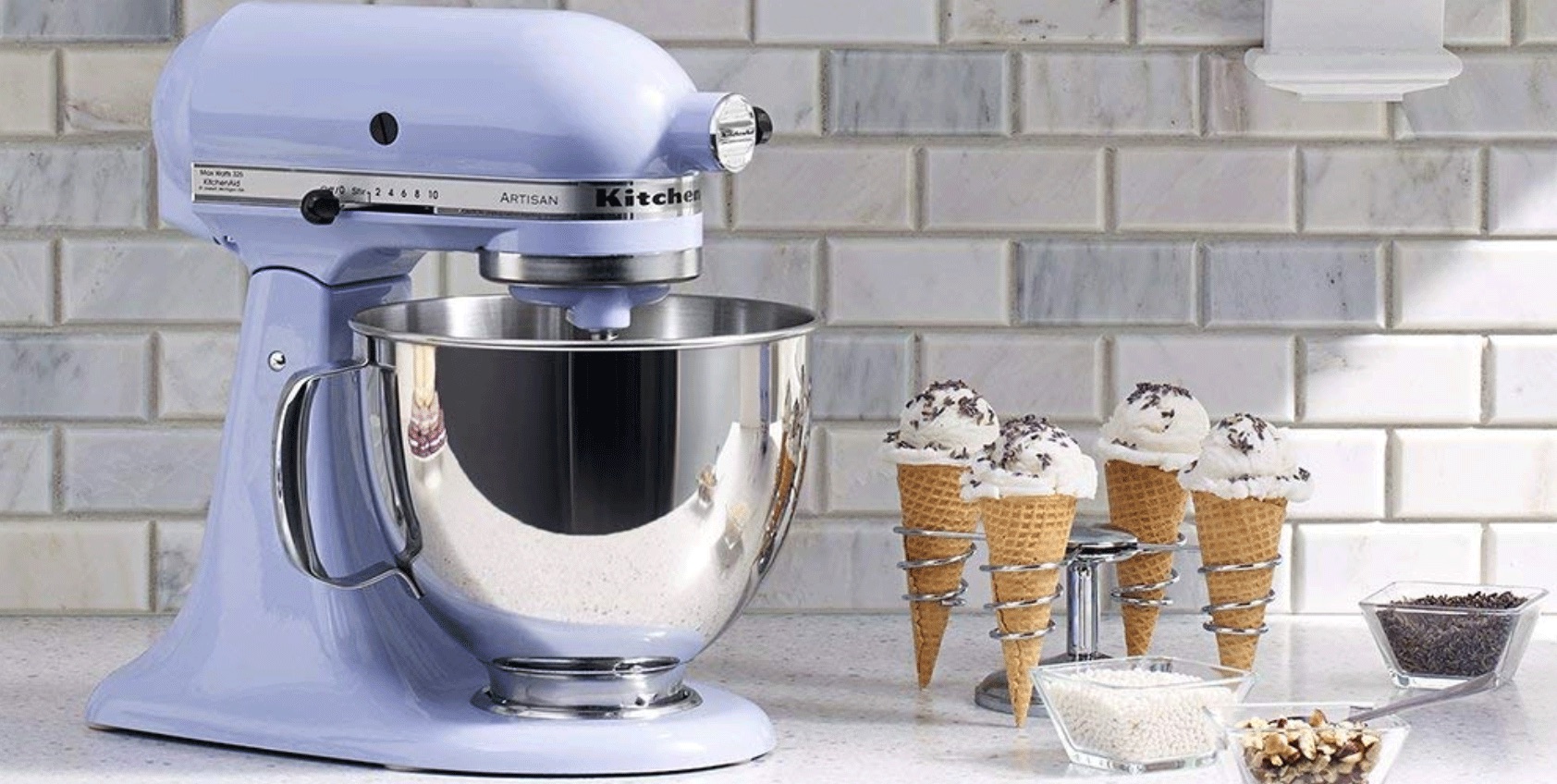


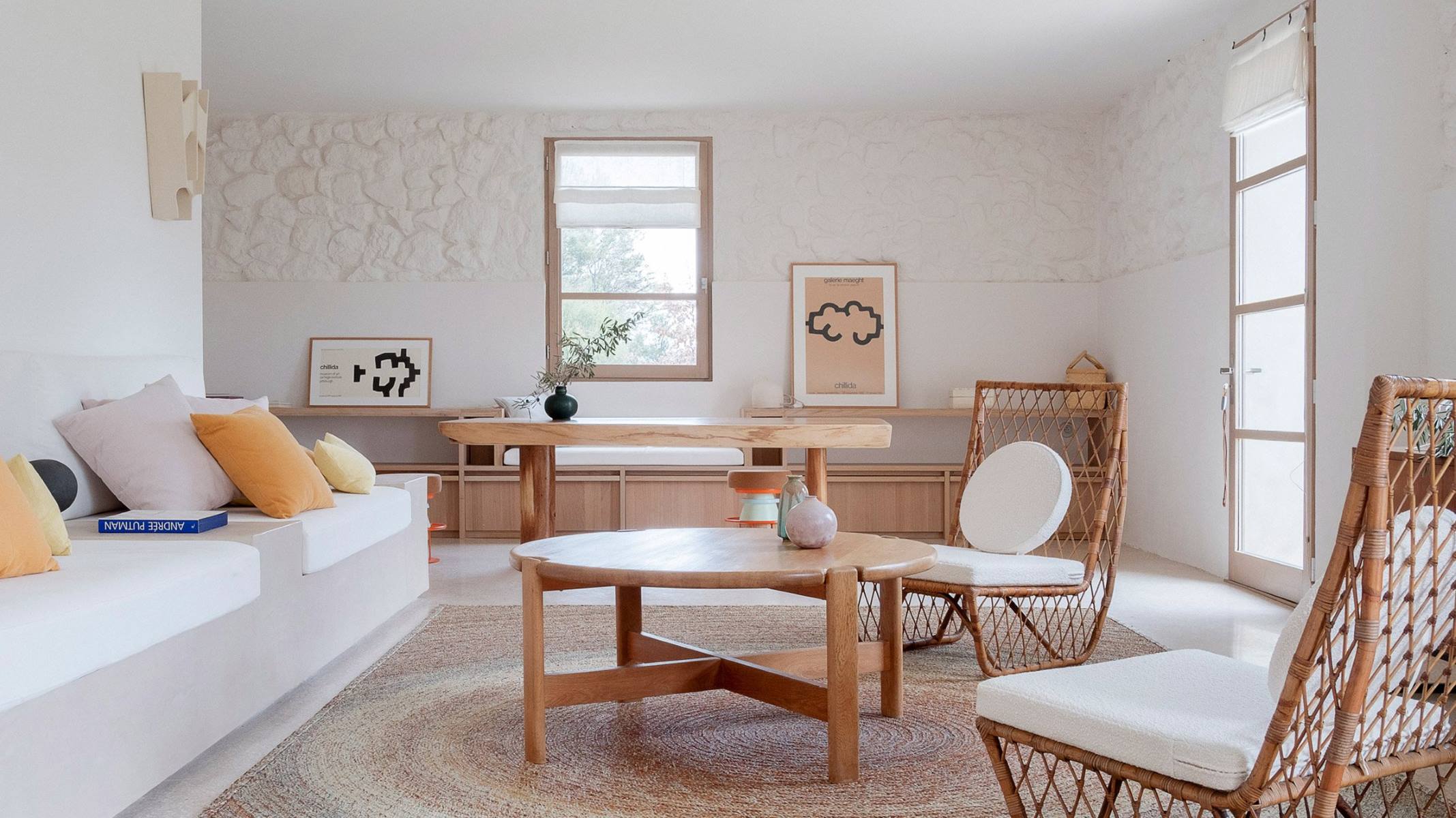
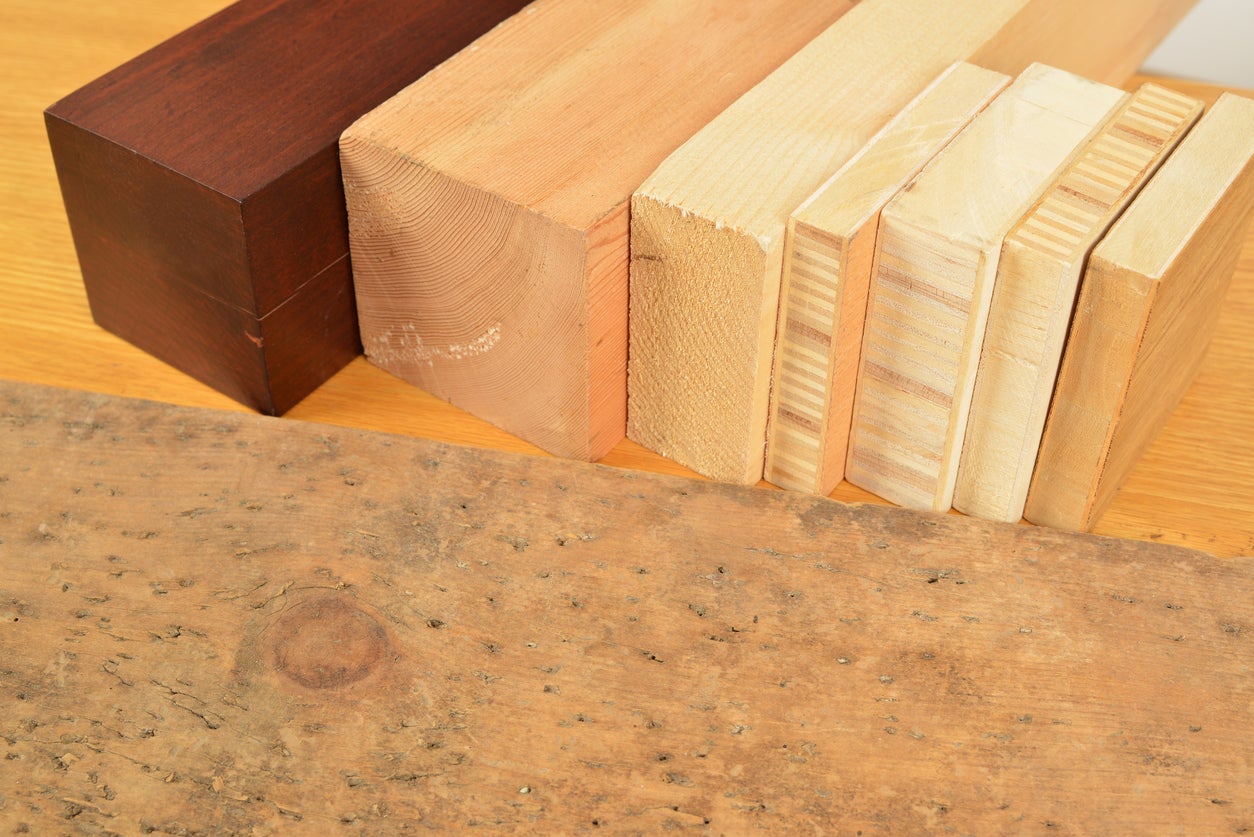

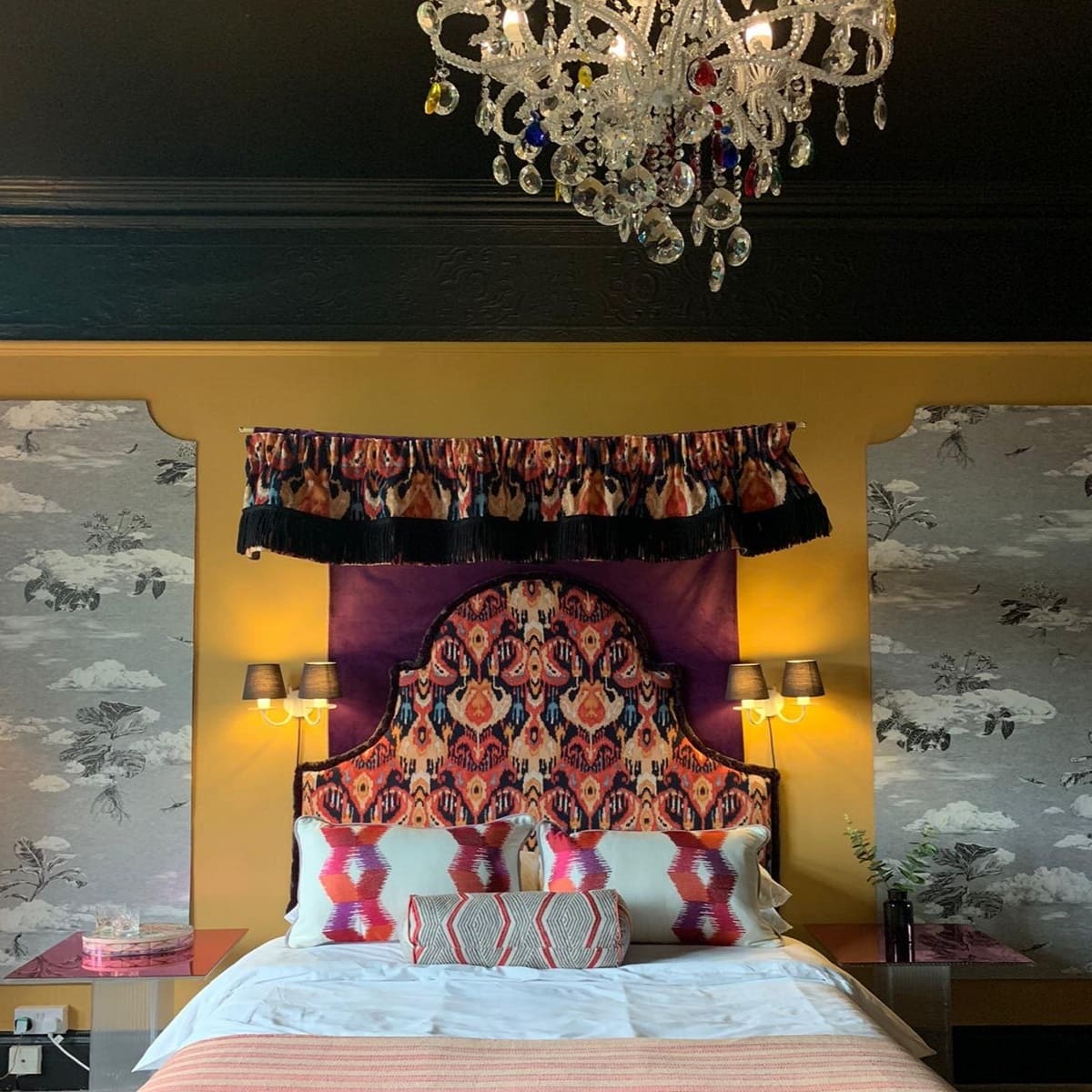


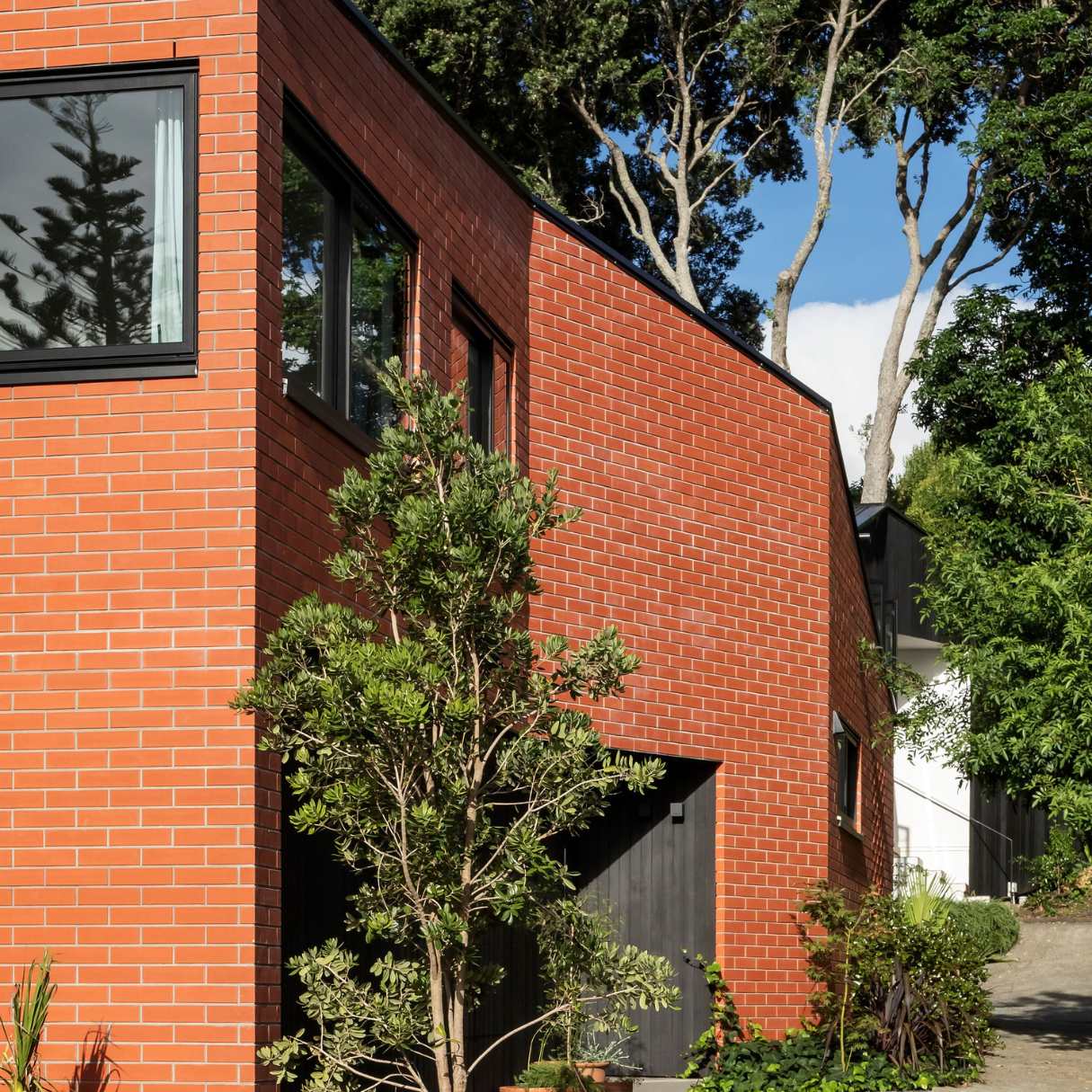

0 thoughts on “How To Choose The Right Paint For The Interior Of My House”